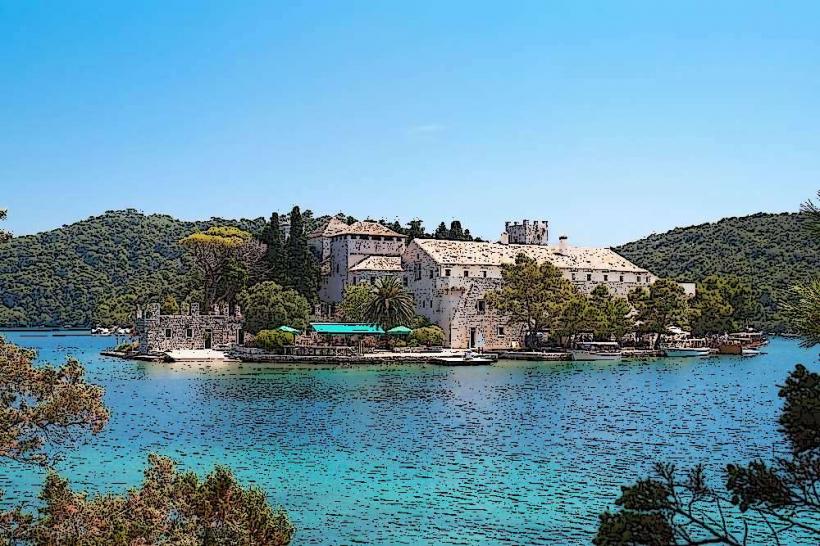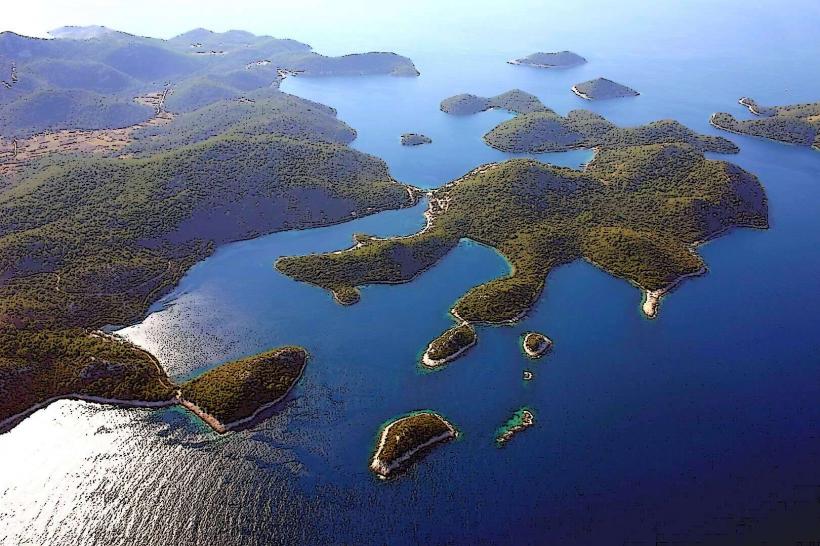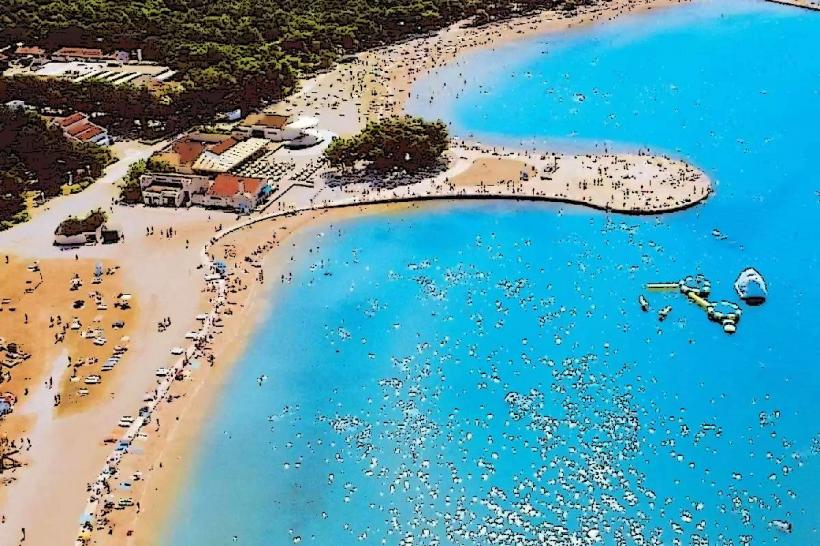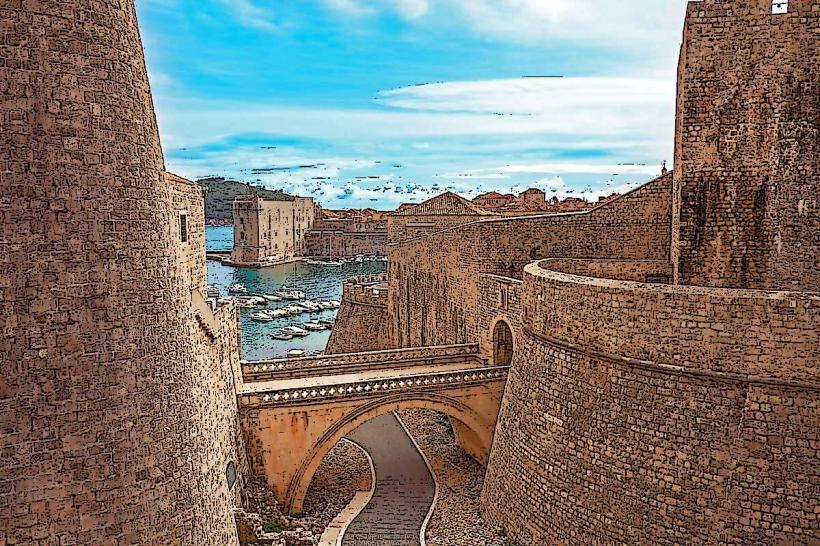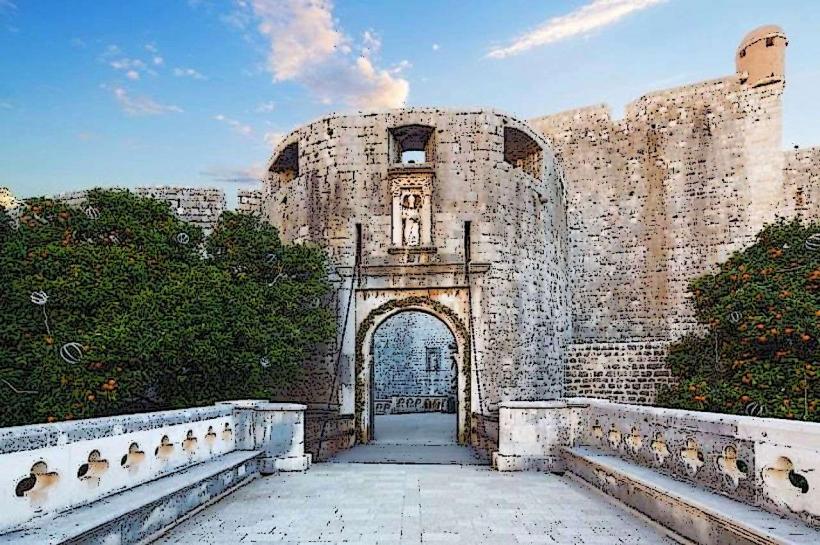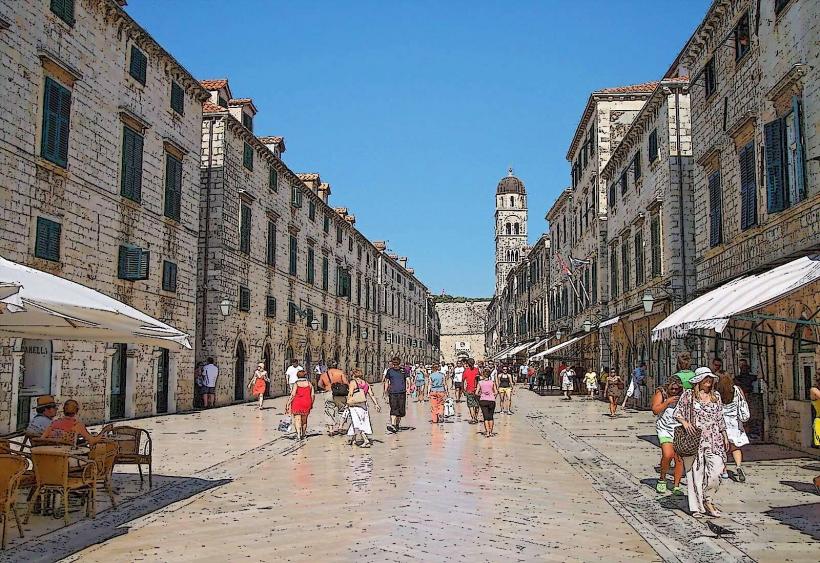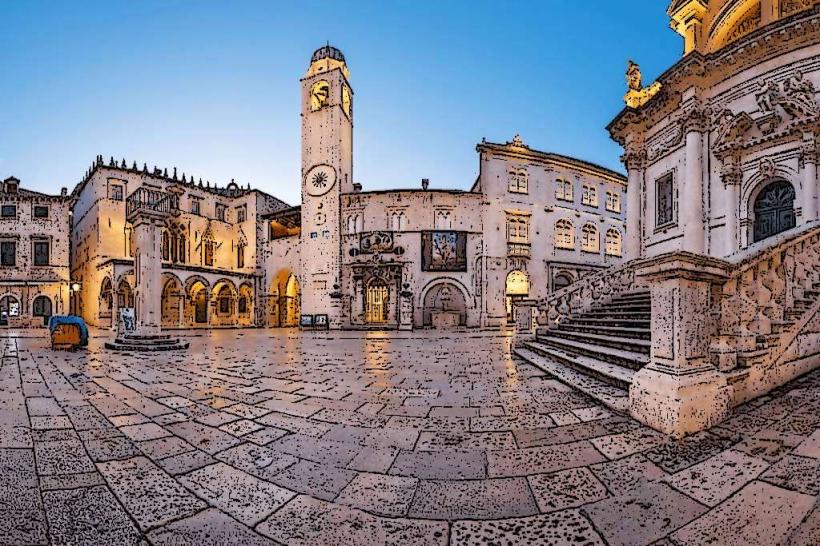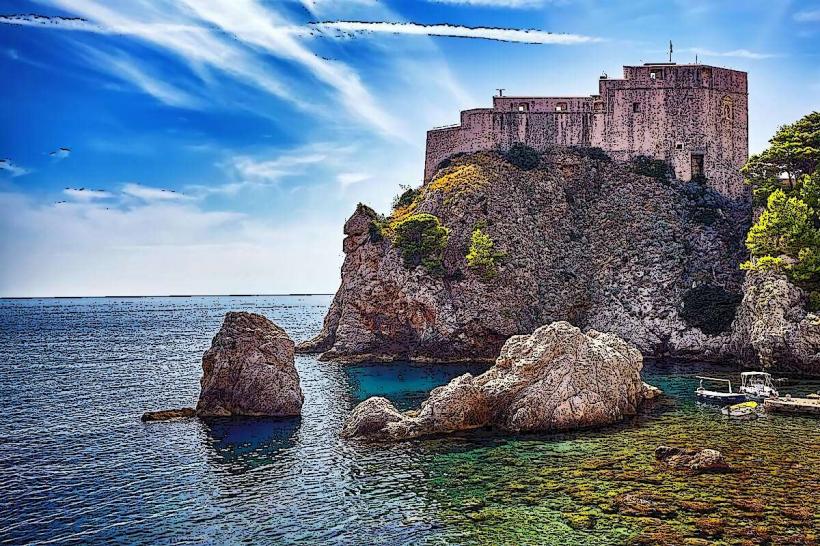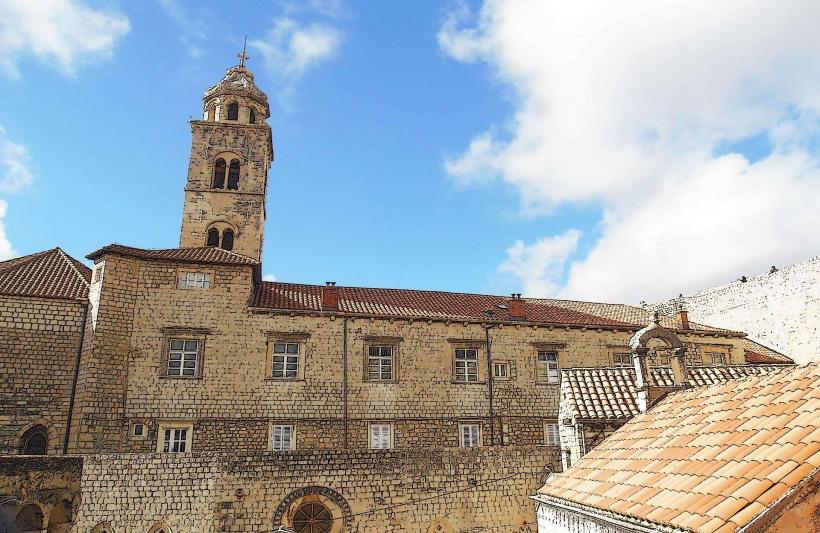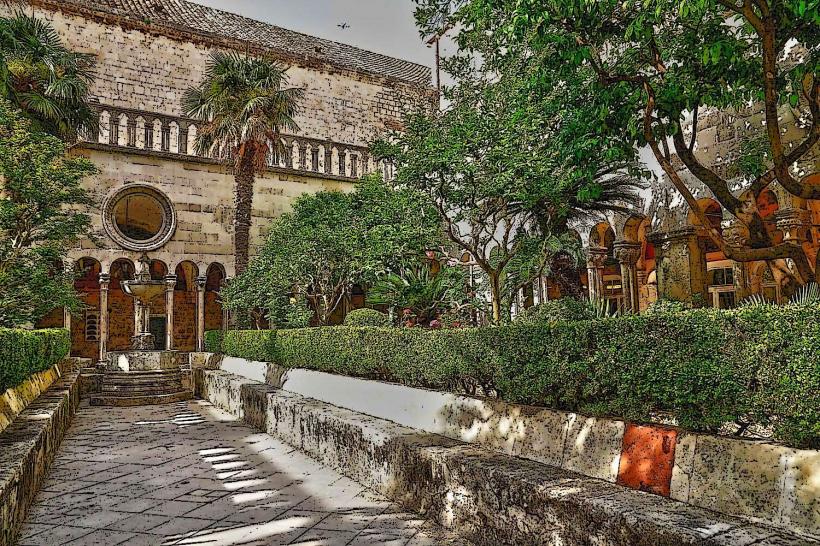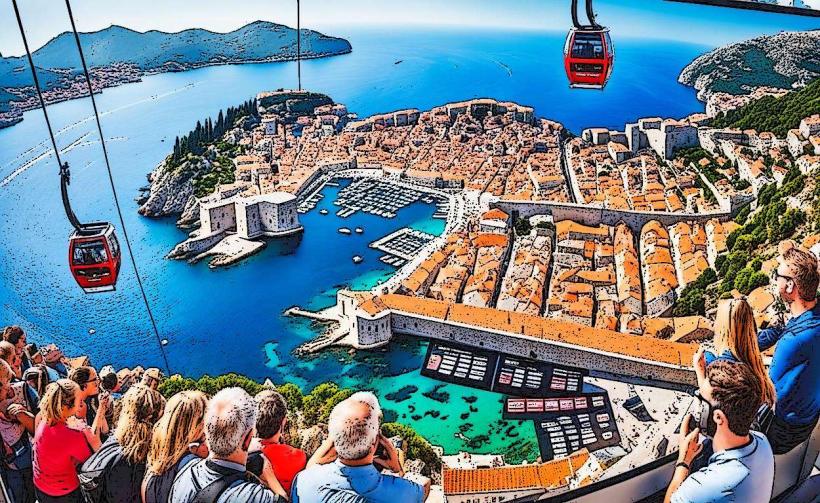Information
Landmark: Rector's PalaceCity: Dubrovnik
Country: Croatia
Continent: Europe
Rector’s Palace (Knežev dvor)
The Rector’s Palace (Knežev dvor) is one of the most significant historical buildings in Dubrovnik. Located on Stradun, the main street of the Old Town, the palace once served as the residence of the Rector of the Republic of Ragusa, the highest authority in the city-state of Dubrovnik. Today, it is a museum and an important cultural landmark that reflects the city’s rich political, architectural, and historical heritage.
Historical Background
- Origins: The Rector’s Palace was originally built in the 14th century, although the structure we see today was mostly reconstructed in the 15th century after being damaged by an earthquake.
- Rector of Ragusa: The Rector, or Knež, was the head of state during the time of the Republic of Ragusa (Dubrovnik’s former self-governing state). The role was largely ceremonial, but the position wielded considerable influence over both the political and administrative decisions of the republic.
- Function: The palace served as the official residence and office of the Rector. The building housed the Rector’s court and was a center for the city’s political life, hosting important meetings and decisions. The Rector would live in the palace for a month at a time, as his position was rotated frequently to ensure no individual held power for too long.
- Renovations: The current palace was rebuilt after a major earthquake in 1667, which severely damaged much of the city. The renovation was carried out in the Renaissance and Baroque styles, with new architectural details and frescos added during this period.
Architectural Features
- Renaissance Design: The palace reflects the Renaissance style, with a focus on symmetry, clean lines, and harmonious proportions. It is a blend of Gothic, Renaissance, and Baroque elements, making it an architectural treasure.
- Facade: The palace’s grand facade faces Stradun and is characterized by arched windows and columns. Its elegant stonework, especially the arches and porticoes, creates a striking appearance.
- Arched Loggia: The building’s loggia (a covered exterior gallery) is one of its most notable features, where public announcements and decisions were often made. This open space adds a sense of grandeur to the palace.
- Interior: Inside, the palace features vaulted ceilings, grand staircases, and decorative stonework. It has multiple rooms, including the Rector’s office and hall of meetings.
- Courtyard: The interior of the palace has a courtyard surrounded by galleries with a view of the palace's central fountain. This space would have been used for various state functions and gatherings.
Museum and Exhibitions
Since the Rector’s Palace ceased to function as the seat of government, it has been transformed into a museum, the Cultural History Museum of Dubrovnik.
- Exhibits: The museum houses a collection of artifacts and historical objects from Dubrovnik’s long and storied past. Among its displays are historical documents, paintings, furniture, and items from the Republic of Ragusa.
- Artworks: The museum is home to many Renaissance and Baroque artworks, including paintings of historical figures and scenes that depict life in the Republic of Ragusa.
- Historical Significance: It also showcases the city’s political, cultural, and social life, offering visitors a deeper understanding of Dubrovnik’s role in Mediterranean history.
Key Features
- Facade and Portico: The palace’s facade is a prominent example of Renaissance architecture in Dubrovnik, with its columns, arches, and stone carvings. The portico or loggia was a public space for state announcements and gatherings.
- Staircase: The grand stone staircase in the entrance hall leads to the first floor, once the private quarters of the Rector.
- Ceilings and Decorations: The palace’s ceilings are richly decorated with frescoes and carvings, showcasing the Baroque influence in the building’s design.
- Courtyard Fountain: The central courtyard features a stone fountain, which would have served as both a decorative and functional feature.
- The Rector’s Office: The office where the Rector conducted his duties is preserved and features period furniture and artifacts from the Republic of Ragusa era.
Visiting Rector’s Palace
- Opening Hours: The museum is open to the public, usually from morning until late afternoon. Specific hours may vary based on the season.
- Admission: There is an entry fee to visit the museum, with tickets available at the palace itself or at nearby ticketing points. The fee includes access to the cultural history exhibits.
- Best Time to Visit: Early mornings or late afternoons are ideal to avoid crowds, particularly in the peak tourist season.
- Accessibility: The palace is located on Stradun, so it is easily accessible by foot from anywhere in the Old Town. The museum is wheelchair accessible, though some areas may be more challenging due to the building's historical layout.
Nearby Attractions
- Stradun: Just outside the palace, Stradun is the main street of Dubrovnik and a vibrant hub of shops, cafés, and cultural attractions.
- Church of St. Blaise: The Church of St. Blaise is a Baroque church located nearby. It is dedicated to the patron saint of Dubrovnik and a key landmark in the Old Town.
- Sponza Palace: Another historic building near Rector’s Palace, the Sponza Palace is a blend of Gothic, Renaissance, and Baroque styles. It houses the State Archives of Dubrovnik.
- Dubrovnik Cathedral: The Dubrovnik Cathedral, a beautiful Baroque church, is just a short walk away and worth visiting for its stunning interior and relics.
- Dubrovnik City Walls: Visitors can take a walk along the famous city walls, which offer spectacular views of the Old Town and the Adriatic Sea.
Fun Facts
- Game of Thrones: The Rector’s Palace and its surroundings have been featured in Game of Thrones, where it stood in for parts of King’s Landing, the capital of the Seven Kingdoms.
- Public Functions: The palace’s loggia and other spaces were often used for public functions and announcements. The building played an important role in the political and cultural life of the Republic of Ragusa.
- Historical Documents: The palace is home to some of the oldest surviving documents from the Republic of Ragusa, including medieval manuscripts and government records.
Why Visit Rector’s Palace?
- Historical Significance: The palace offers a fascinating glimpse into the political life of Dubrovnik during the era of the Republic of Ragusa.
- Architectural Beauty: The palace is a stunning example of Renaissance and Baroque architecture, with elegant designs and grand features.
- Cultural Museum: The museum housed inside the palace allows visitors to learn about the history and culture of Dubrovnik through its exhibits, art, and artifacts.
- Photographic Opportunity: The palace’s beautiful façade and courtyard offer excellent opportunities for photography.
Conclusion
The Rector’s Palace is not only an architectural masterpiece but also a window into Dubrovnik’s rich history as a powerful republic. Whether you are drawn to its stunning design, historical significance, or the fascinating museum exhibits, a visit to the Rector’s Palace is a must for anyone exploring the heart of Dubrovnik.

